Gynecomastia is a common condition among men. It may affect only one or both breasts. Cosmetic Surgery may be performed alone to remove excess glandular tissue or combined with liposuction for the removal of fat.
The results of breast reduction for men include a firmer, flatter, more contoured chest. Males of any age are candidates for this procedure.
Enlarged Breasts In Men (Gynecomastia)

Before and After Photos
In the meantime, here is an example of gynecomastia surgery or breast reduction for men taken before and after the procedure.
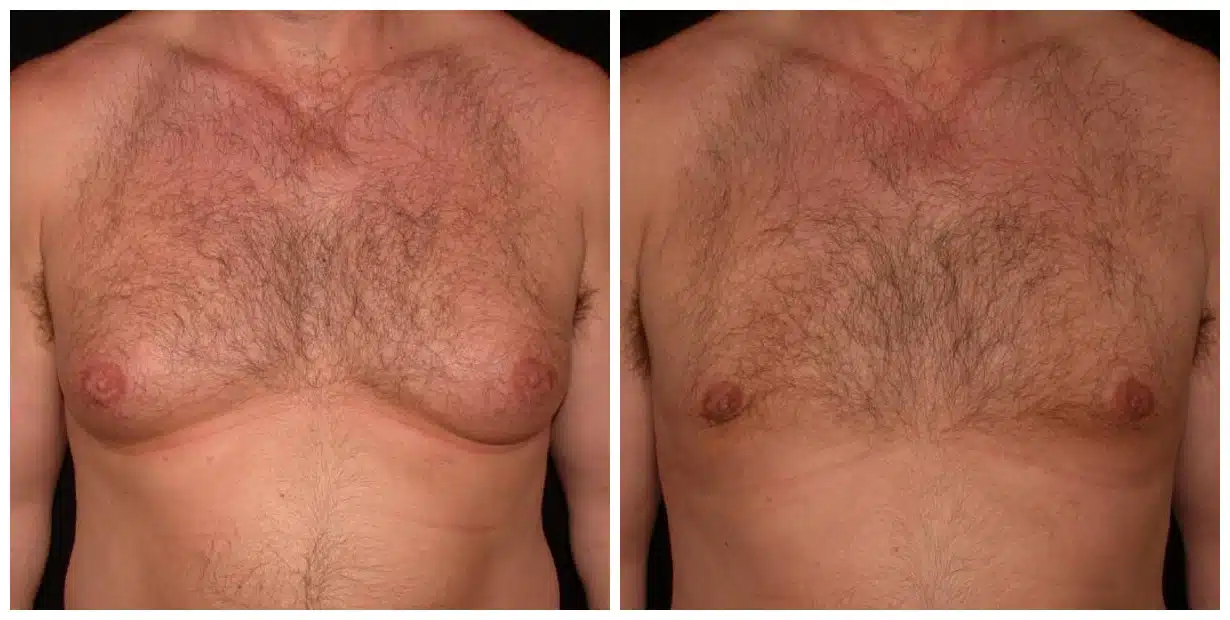
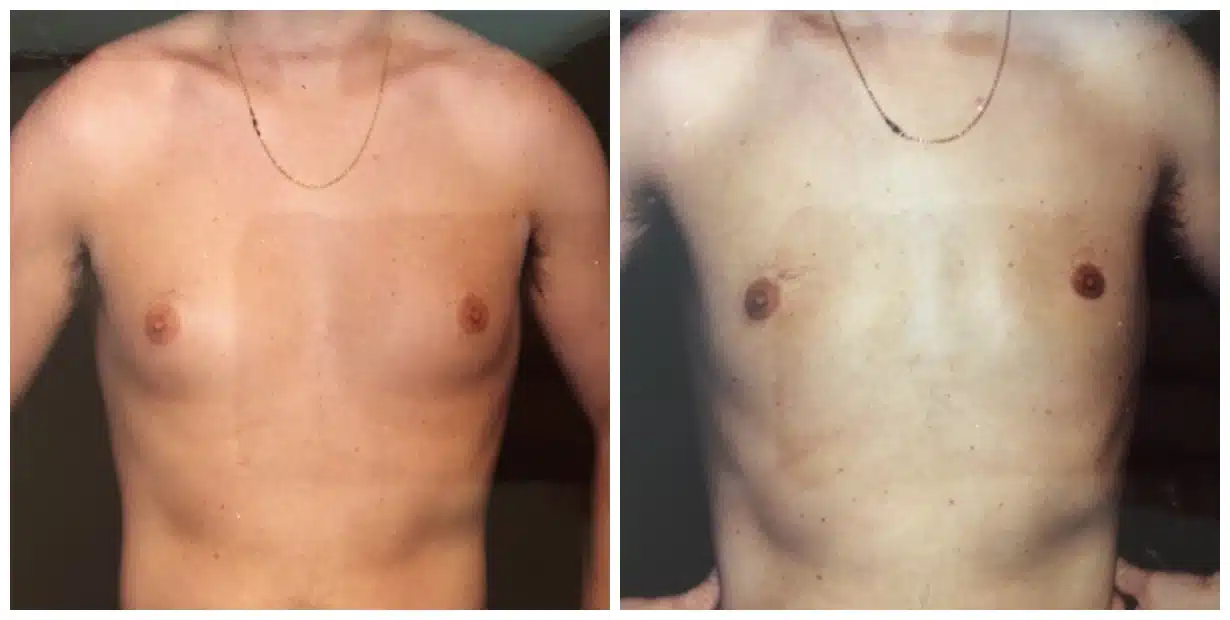

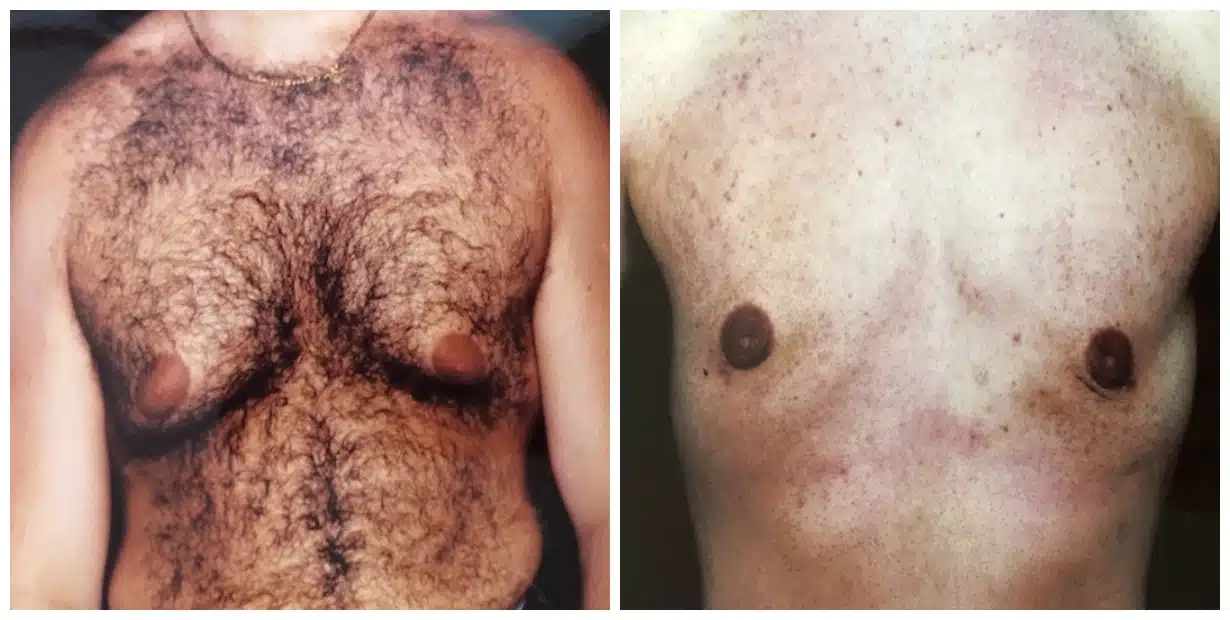
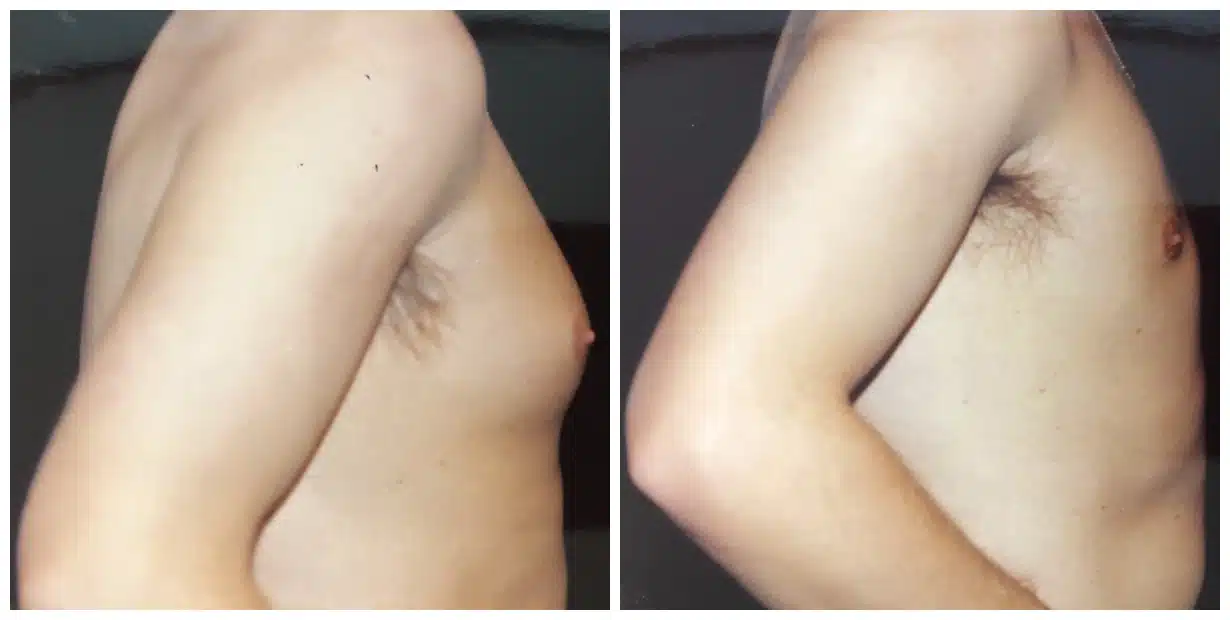
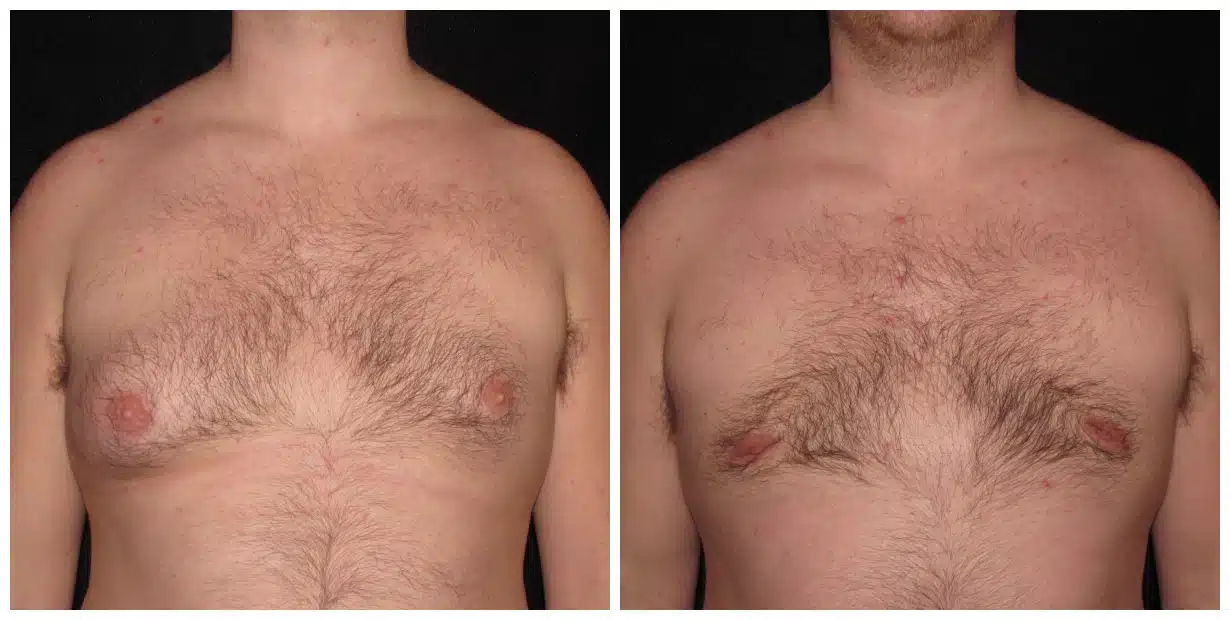
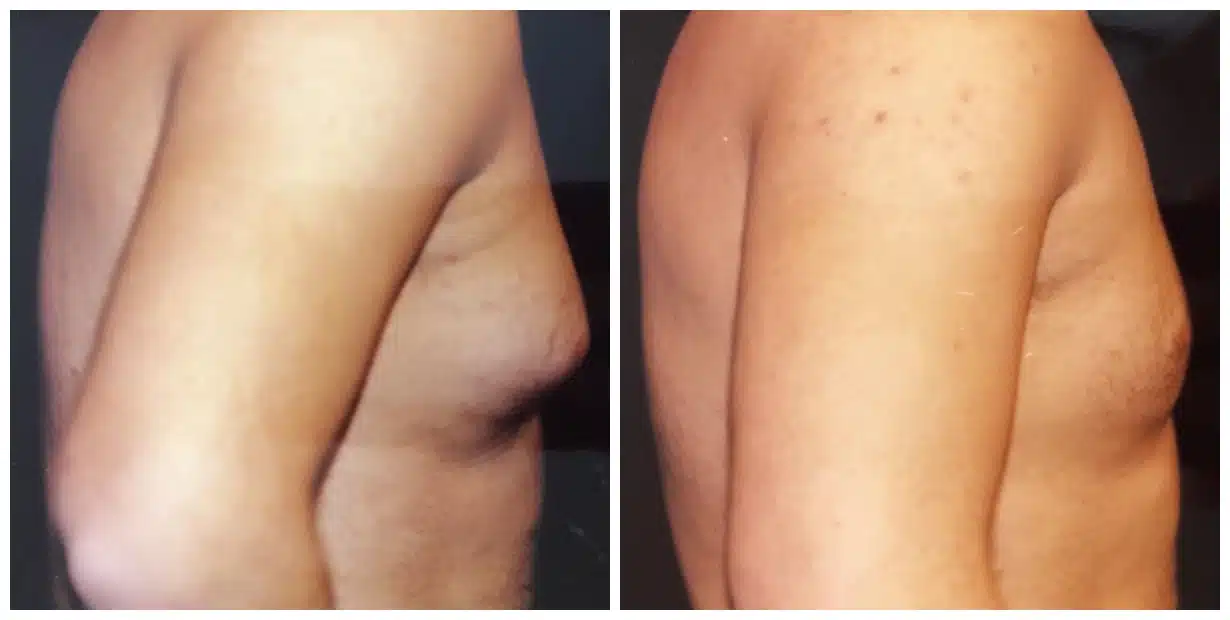
How Do I Know What Type Of Gynecomastia I Have?
Gynecomastia is a medical term to describe men's enlargement of breast tissue. This fatty breast tissue occurs most commonly during puberty, although it can occur later in life. There are three types of gynecomastia:
- Congenital - refers to an abnormality present at birth
- Idiopathic - refers to an unknown cause but is often a result of diet and weight gain
- Secondary - secondary refers to an underlying disease process such as breast cancer
The symptoms of true gynecomastia vary depending on the location and size of the area. In general, however, the following signs and symptoms indicate the presence of gynecomastia:
- Painful or tender breasts
- Dimpling of skin around nipples
- Swelling of breast tissue not related to weight
Conditions That Cause Similar Symptoms
Gynecomastia is common among men in their 20s and 30s. Usually, it goes away after puberty.
But pseudo gynecomastia is caused by fat deposits under the skin. This abnormal breast tissue is a benign condition and doesn't require medical treatment but is a common cosmetic surgery addressed by liposuction.
Male breast cancer is rare and requires a physical exam and further investigation. Like any form of cancer, it needs to be addressed as soon as possible.
What Is Gynecomastia Surgery?
Gynecomastia surgery by a board-certified plastic surgeon such as Dr. Vagotis is used to reduce the size of male breasts. These breast reduction procedures are performed on men who suffer from breast enlargement due to hormonal changes, weight gain, or aging.
There are several types of gynecomastia treatment procedures. Among them, reduction mammaplasty is the most popular one. In this operation, Dr. Vagotis places the incision inside the armpit for maximum concealment.
In breast reduction surgery, Dr. Vagotis will cut away excess skin and fat tissue around the chest wall area to make it smaller. They also reshape the nipple position and shape.
If you're interested in learning about gynecomastia surgery, please contact us today!
What Men Should Know Before Having Gynecomastia Surgery
Gynecomastia is common in young boys and older men, especially those with a history of obesity. This male breast enlargement occurs when fat cells grow around the nipples and breasts. While it's normal for some people to develop small amounts of extra breast tissue during puberty, more significant amounts are considered abnormal.
For many men, the cause of gynecomastia isn't clear. Some believe that hormones play a role; others think genetics might be involved. Whatever the reason, most doctors agree that surgery is necessary to correct the problem.
There are several different types of surgical procedures used to treat gynecomastia:
- Liposuction, where only excess fat is removed from the chest wall area
- Removal of glandular tissue
- Mastopexy
In the second case, the surgeon removes the unwanted fat and glands from the chest wall. Depending on how much tissue needs to be removed, the operation takes anywhere from 30 minutes to three hours. Afterward, patients can expect soreness and swelling. However, most recover quickly and return to work in less than a week.
The final treatment option is called mastopexy. With this breast reduction surgery, the doctor reshapes the chest contour breast tissue to make it look like the rest of the body. It is the male equivalent of a breast lift.
While each of these treatments offers benefits, there are drawbacks to consider. For example:
- Liposuction occasionally leads to scarring, bruising, numbness, and loss of sensation in the treated areas.
- Gland removal sometimes affects hormone levels, causing low testosterone and high estrogen levels.
- Mastopexy can require more than one surgery.
If you decide to go ahead with surgery, consult with Dr. Vagotis about your medical history, common complications, potential risks, and side effects of the procedure best suited for your case.
Do I Need Other Procedures?
Gynecomastia surgery is considered one of the most effective ways to reduce the size of male breasts. There are different procedures depending on how much fat you have and what you want to do about it. For example, liposuction removes fatty deposits while mastectomy removes both glandular and fatty tissues. You might consider having liposuction done at the same time if you are having a more extensive procedure.
Another popular procedure is nipple reduction. In this case, Dr. Vagotis makes minor cuts around the nipple area and pull it down. She will use fine sutures to close the wounds.
The bottom line is men want a masculine-looking chest, and gynecomastia surgery can help achieve that look.
Recovery After Surgery
Liposuction is one of the most common cosmetic surgeries, with over 800,000 procedures performed yearly. While it might seem like a quick fix, patients should be aware of the side effects. Here are five things you need to know about recovery after liposuction.
1. Recovery Time
The average patient needs three hours for the procedure itself. However, it takes several weeks to heal fully. During this period, patients should avoid strenuous exercise and heavy lifting. They should also refrain from consuming alcohol and caffeine, and recreational drugs.
2. Pain Management
Patients experience varying levels of pain during recovery. Some people feel no pain, while others endure discomfort because different body areas require different healing times. Dr. Vagotis will use local anesthesia to numb specific areas of the body for lipo.
3. Bruising
While bruising is usually minimal, patients can still see redness and swelling in certain body areas. These changes occur due to fluid retention. Dr. Vagotis will prescribe compression garments to help prevent swelling.
Coping And Support
While gynecomastia is usually harmless, some people experience discomfort due to the size of the breasts. Although breast cancer is rare, contact Dr. Vagotis immediately if you develop changes. You might also want to talk to someone about how you feel. Coping and support can help you deal with the physical symptoms.
Schedule a one-on-one with Dr. Vagotis to address all your questions and concerns.
